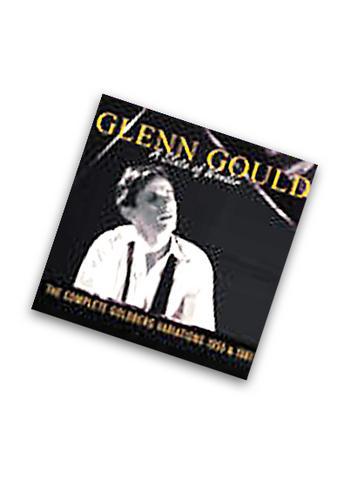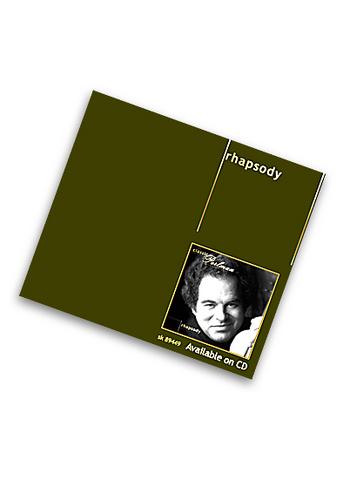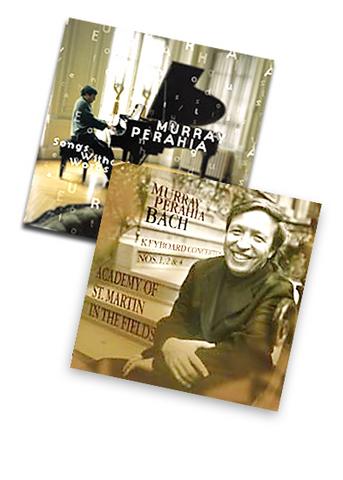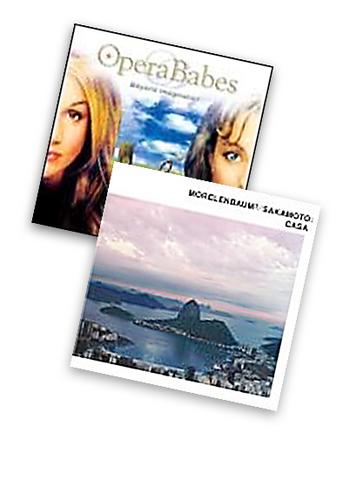Whether or not Bach's keyboard music should be played on a modern piano is a subject that has been debated for so long there would appear to be nothing new to say about it. What should have been the last word was spoken long ago by Rosalyn Tureck. This music, she said, is essentially abstract, and can therefore be played on virtually anything.
Tureck's own legendary 1953 recording of Bach's Well-Tempered Clavier is now available on four CDs from Deutsche Grammophon (463 305-2). You can read a mini-debate on its merits at www.amazon.com. Despite the boxed-in mono sound and some residual tape hiss, it is incomparable. The individual character Tureck gives to each of the 96 tracks is totally astonishing. It converted me overnight to what she calls "the bible of Western music."
Glenn Gould: A State of Wonder

Sony Classical Legacy
SM3K 87703
This repackaging of the two recordings Gould made of Bach's Goldberg Variations offers remastered versions of both. They date from 1955 and 1981 and are very different. But what is particularly valuable is the inclusion of a third, "bonus" CD. This contains the interview Gould gave to music critic and radio journalist Tim Page in 1982 discussing the two recordings. It's hilarious in places, but Gould's thoughts on Bach, and on his younger self playing this music, is something all music-lovers should possess. The first version was one of the most famous recordings ever made, selling in enormous numbers, often to people who'd never bought a classical record before and maybe never did again. But Gould in the interview is rather embarrassed by his youthful excesses, and some critics have indeed called his interpretation eccentric. Those who have long loved it will be hard to persuade of the 1981 version's superiority, however, especially with Gould singing along very audibly on many tracks. The "bonus" CD ends with 12 minutes of takes from the 1955 recording sessions during which Gould demonstrates how God Save the Queen and The Star-Spangled Banner can be played simultaneously so long as you begin half-way through the first. All in all, these three CDs are pure gold. They would make the ideal Christmas present for just about anyone you know, yourself included.

Volodos: Solo Piano Works
Sony Classical
SK 89647

Music promoters have for 20 years been struggling to find a pianist with the popular appeal of Glenn Gould. A current favorite is the 30-year-old Russian, Arcadi Volodos. Here he plays two Schubert sonatas, numbers 1 and 18, with great tenderness, and ends with Liszt's transcription of the penultimate song in Schubert's Die Schone Mullerin cycle in which the miller drowns himself. This sad ending is especially appropriate in that these recordings were the last ones made in Vienna's venerable Sofiensaal before it burnt down in 2001.
Murray Perahia: Songs without Words
Sony Classical

SK 66511
Murray Perahia: Bach Keyboard Concertos
Sony Classical
SK 89690
Perahia also includes four Liszt transcriptions of Schubert songs on the first of these CDs. The CD is otherwise occupied with 15 of Mendelssohn's Songs Without Words, so beloved of mid-19th century amateur and concert pianists, and four of Busoni's piano versions of Bach choral numbers. All items are played with Perahia's usual unostentatious artistry, and might even succeed in giving Mendelssohn's deceptively smooth-sounding style some new admirers.
The second CD contains Bach's keyboard concertos numbers 3, 5, 6 and 7, played on a piano by Perahia while simultaneously conducting London's Academy of St Martin in the Fields instrumentalists. These, usually referred to as Bach's Clavier Concertos, aren't the greatest music in the world, but Perahia plays their solo parts with wit and charm nonetheless.
Classic Perlman: Rhapsody
Sony Classical
SK 89449
Itzhak Perlman already has a large following in Taiwan, but this compilation CD, with several famous artists (Yo-Yo Ma, Daniel Barenboim) in attendance, will serve any newcomers as a convenient introduction to the warm-hearted violinist who plays sitting down due to a childhood bout of polio.
Morelenbaum2/ Sakamoto: Casa
Sony Classical
SK 89982
Opera Babes: Beyond Imagination
Sony Classical
SK 89916
These are two semi-classical items. The first consists of laid-back Brazilian songs, sometimes in Portuguese, sometimes in English sung by Paula Morelenbaum, accompanied by Jacques Morelenbaum (cello) and Ryuichi Sakamoto (piano). The items are beautifully recorded, if rather unvaried in style when heard one after another. The second CD is of famous opera arias with the addition of frequently brutal drumming. The Opera Babes may have been good enough for the 2002 World Cup organizers, but any genuine opera-lover will recognize them for what they are, an execrable travesty.

May 26 to June 1 When the Qing Dynasty first took control over many parts of Taiwan in 1684, it roughly continued the Kingdom of Tungning’s administrative borders (see below), setting up one prefecture and three counties. The actual area of control covered today’s Chiayi, Tainan and Kaohsiung. The administrative center was in Taiwan Prefecture, in today’s Tainan. But as Han settlement expanded and due to rebellions and other international incidents, the administrative units became more complex. By the time Taiwan became a province of the Qing in 1887, there were three prefectures, eleven counties, three subprefectures and one directly-administered prefecture, with

Taiwan Power Co (Taipower, 台電) and the New Taipei City Government in May last year agreed to allow the activation of a spent fuel storage facility for the Jinshan Nuclear Power Plant in Shihmen District (石門). The deal ended eleven years of legal wrangling. According to the Taipower announcement, the city government engaged in repeated delays, failing to approve water and soil conservation plans. Taipower said at the time that plans for another dry storage facility for the Guosheng Nuclear Power Plant in New Taipei City’s Wanli District (萬里) remained stuck in legal limbo. Later that year an agreement was reached

What does the Taiwan People’s Party (TPP) in the Huang Kuo-chang (黃國昌) era stand for? What sets it apart from their allies, the Chinese Nationalist Party (KMT)? With some shifts in tone and emphasis, the KMT’s stances have not changed significantly since the late 2000s and the era of former president Ma Ying-jeou (馬英九). The Democratic Progressive Party’s (DPP) current platform formed in the mid-2010s under the guidance of Tsai Ing-wen (蔡英文), and current President William Lai (賴清德) campaigned on continuity. Though their ideological stances may be a bit stale, they have the advantage of being broadly understood by the voters.

In a high-rise office building in Taipei’s government district, the primary agency for maintaining links to Thailand’s 108 Yunnan villages — which are home to a population of around 200,000 descendants of the Chinese Nationalist Party (KMT) armies stranded in Thailand following the Chinese Civil War — is the Overseas Community Affairs Council (OCAC). Established in China in 1926, the OCAC was born of a mandate to support Chinese education, culture and economic development in far flung Chinese diaspora communities, which, especially in southeast Asia, had underwritten the military insurgencies against the Qing Dynasty that led to the founding of